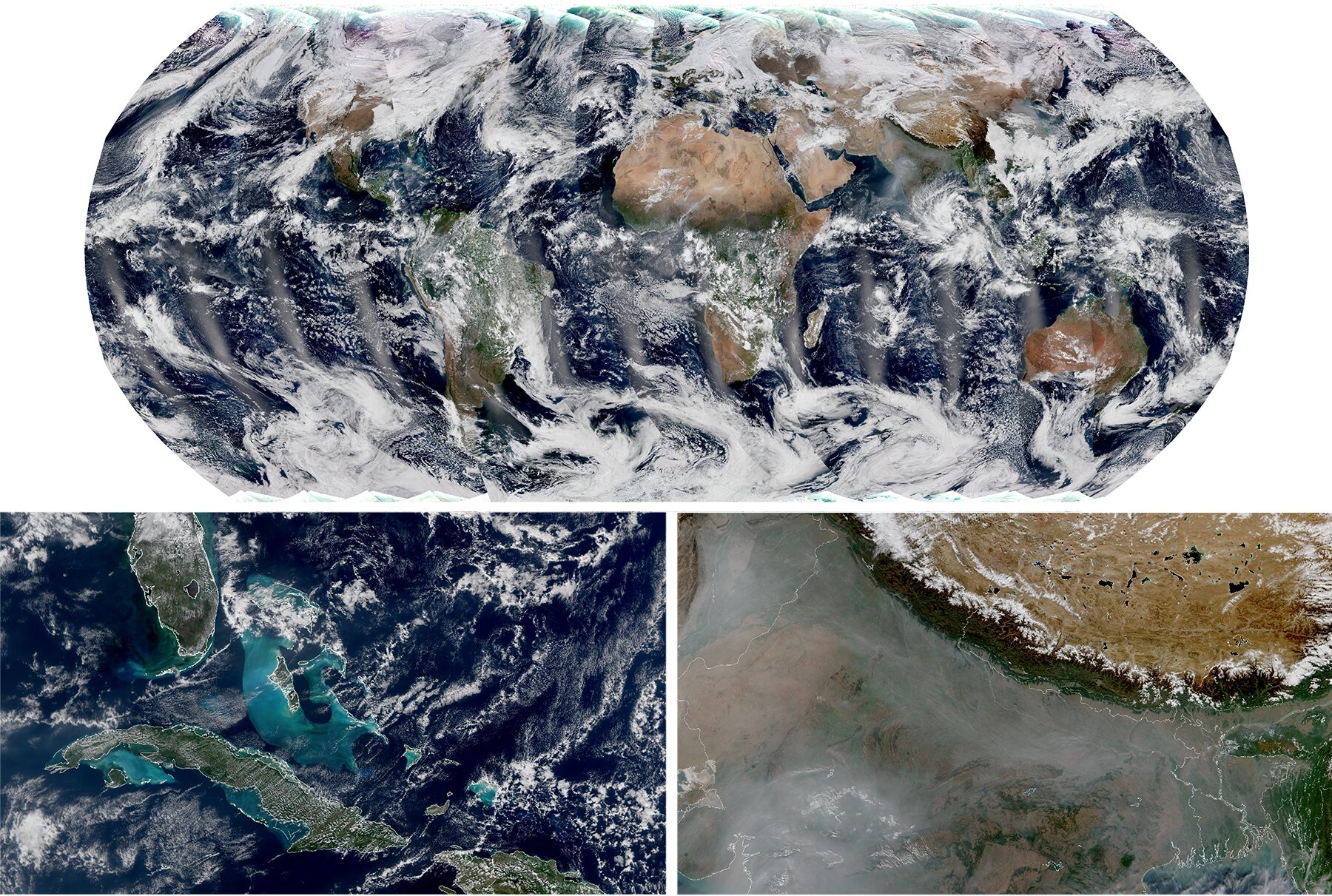Vivid blue water within the Caribbean Sea and smog in Northern India seem within the first world picture produced with information from NOAA-21’s VIIRS instrument.
The Seen Infrared Imaging Radiometer Suite (VIIRS) instrument on NOAA-21 started gathering Earth science information on Dec. 5 because the satellite handed over the East Coast of the US. Information for the worldwide picture was collected over a interval of 24 hours between Dec. 5 and 6. This got here three weeks after NASA launched the NOAA-21 satellite from Vandenberg House Power Base in California on Nov. 10, 2022.
The VIIRS instrument—which additionally flies on the NOAA-20 and the NASA/NOAA Suomi-NPP satellites—gives world measurements of the environment, land, and oceans. It was constructed by Raytheon Intelligence & House in El Segundo, California.
“VIIRS serves so many disciplines, it is a completely crucial set of measurements,” mentioned Dr. James Gleason, NASA venture scientist for the JPSS Flight Challenge. “VIIRS gives many various information merchandise which are utilized by scientists in unrelated fields, from agricultural economists making an attempt to do crop forecasts, to air high quality scientists forecasting the place wildfire smoke shall be, to catastrophe help groups who depend night time lights to know the impression of a catastrophe.”
Over the oceans, VIIRS measures sea floor temperature, a metric that is essential for monitoring hurricane formation. It additionally measures ocean color, which helps scientists monitor phytoplankton exercise, a key indicator of ocean ecology and marine well being.
“The turquoise shade that is seen round Cuba and the Bahamas within the bottom-left picture above comes from sediment within the shallow waters across the continental shelf,” mentioned NOAA’s Dr. Satya Kalluri, Joint Polar Satellite tv for pc System program scientist.
Over land, VIIRS can detect and measure wildfires, droughts and floods, and its information can be utilized to trace the thickness and motion of wildfire smoke. The underside-right picture above reveals haze and smog over Northern India that’s possible on account of agricultural burning. The snow-capped Himalayas and the Tibetan plateau are additionally seen to the north.
One of many distinctive options of VIIRS is its Day-Evening Band, which captures photographs of lights at night time, together with metropolis lights, lightning, auroras and lights from ships and fires. And certainly one of its most essential makes use of is imagery over Alaska, Dr. Kalluri mentioned. It’s because these satellites, which orbit the Earth from the North pole to the South pole, fly immediately over the Arctic a number of instances a day.
The instrument additionally generates crucial environmental merchandise on snow and ice cowl, clouds, fog, aerosols and dust, and the well being of the world’s crops.
This “first mild” picture comes two weeks after the primary picture from the satellite’s Superior Expertise Microwave Sounder (ATMS) was launched. The satellite, referred to as JPSS-2 throughout the construct and launch, was formally renamed NOAA-21 after launch, following NOAA’s naming conventions for polar orbiting satellites.
“We had two VIIRS on orbit, and now we have got three,” Dr. Gleason mentioned. “We launch a number of climate satellites to make doubly and now triply certain we at all times have one going. House is a harmful setting. Stuff occurs and you may lose an instrument or a satellite, however we can not lose the information. It is too essential, to too many individuals.”
Supplied by
NASA’s Goddard Space Flight Center
Quotation:
First photographs launched from NOAA-21 VIIRS instrument (2022, December 15)
retrieved 15 December 2022
from https://phys.org/information/2022-12-images-noaa-viirs-instrument.html
This doc is topic to copyright. Aside from any truthful dealing for the aim of personal research or analysis, no
half could also be reproduced with out the written permission. The content material is offered for info functions solely.

